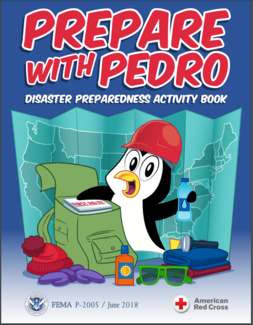
Prepare with Pedro is a free youth preparedness program created by the American Red Cross. FEMA is partnering with them to offer the Prepare with Pedro: Disaster Preparedness Activity Book. This resource is designed to teach young children and their families how to stay safe during disasters and emergencies through fun activities such as crosswords, coloring pages, matching games, and more!
See the full series of Prepare with Pedro storybooks, supplemental activities and teacher guides. The series includes preparation for many hazards and emergencies, including: Flood, Hurricane, Tsunami, Tornado, Earthquake, Power Outage, and Wildfire. Spanish versions are also available.
|
By Chandi McCracken-Holm and Brooke Asleson, MN Pollution Control Agency (MPCA)
MPCA Smart Salting program aims to protect Minnesota's freshwater species

Most Minnesotans embrace winter and don’t let a little snow get in their way. But all that salt is toxic to Minnesota’s freshwater fish, insects, and amphibians. Just one teaspoon of salt permanently pollutes five gallons of water! In addition to the toxicity impacts of chloride, new research indicates that chloride is altering our freshwater ecosystems in a variety of ways. To reduce these impacts, the Minnesota Pollution Control Agency has a Smart Salting program which includes certification trainings for snowplow drivers, winter maintenance contractors and businesses on how to keep the roads, parking lots and sidewalks safe while minimizing chloride pollution to our lakes, streams and wetlands used to melt ice.
In the past year the MPCA has expanded the Smart Salting program by collaborating with the We Are Water MN and Minnesota GreenCorps programs to create and offer workshops for local decision makers, members of boards like lake associations and those who have the ability to influence the winter maintenance and water softening activities in their community or organization.
Local Leaders Smart Salting workshop
|
The current drought continues to impact much of Minnesota. A comparison of the extremes was recently shared for the Sibley Park (Mankato) area.
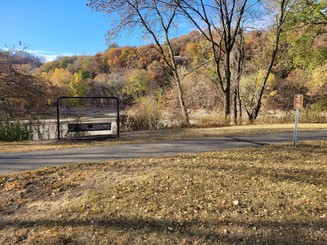
During drought
Blue Earth and Minnesota River confluence - looking northwest from Sibley Park - on Oct. 19, 2022.
Note the hanging bench is high and dry.
Minnesota River discharge at Mankato: 497 cfs
|

During flood
Blue Earth and Minnesota River confluence - looking northwest from Sibley Park - on March 22, 2019.
Note the hanging bench is under water.
Minnesota River discharge at Mankato: 67,700 cfs
|

River bottom during drought
Confluence of Blue Earth and Minnesota Rivers on Oct. 19, 2022.
Minnesota River discharge at Mankato: 497 cfs
|
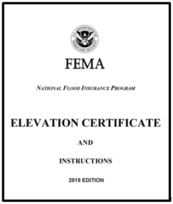
The most recent FEMA Elevation Certificate (EC) has an expiration date of Nov. 30, 2022. However, FEMA released bulletin W-22022 on Nov. 28, 2022 reporting that the updated EC and Dry Floodproofing Certificate for Non-Residential Structures are currently under review at the Office of Management and Budget (OMB). FEMA advises to continue using the current forms available on the FEMA website until the OMB review process is complete.
NOTE: Upon OMB approval, FEMA will issue a memorandum highlighting changes to the forms and update their website for immediate use of the updated forms. It will be mandatory to use the new forms once they are available.
|
By Ceil Strauss, DNR, State Floodplain Manager
Are you the new person responsible for administering your community's zoning ordinance? If so, following are the first questions to answer about your community's floodplain management responsibilities, and suggested resources.
1. Does my community have FEMA floodplain maps?
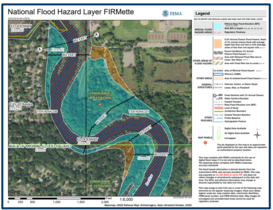
- What are the current effective maps? The easiest way to see the current effective FEMA maps is to visit FEMA's Map Service Center and search for your community. For more information on viewing and printing maps of portions of the FEMA maps - called "FIRMettes" - see DNR's Is My House in the Floodplain? video.
- Does your county have digital or paper maps? See DNR's Find Flood Maps page to see whether your county's current effective maps are digital or paper (or if you are in a county that does not have FEMA maps).
- Paper maps: Do you have paper copies of the FEMA map panels? Communities are provided one copy of the final effective maps by FEMA, even when the digital versions of the map are the official map. The maps are usually large panels that are "Z-folded." Note: Very old maps - from the 1970s or 1980s - that are 11" x 17" are still the current effective maps in some parts of the state!
- Digital maps: Since 2003, new official FEMA maps are digital. Older FEMA maps have been scanned (although the scan qualities vary).
|
2. Does my community have a floodplain management ordinance?
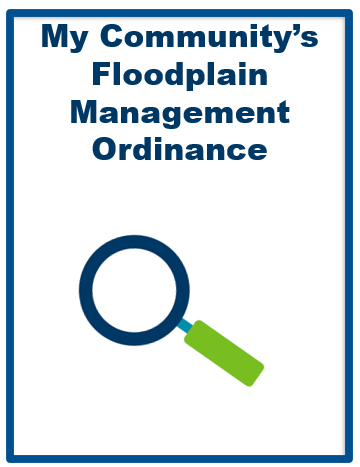
Check your local ordinances.
- Do you have a stand-alone floodplain ordinance, or a floodplain management section in your zoning ordinance?
- If you do not find a floodplain management ordinance, contact DNR floodplain management staff to verify whether an ordinance has been approved in the past for your community.
- Related question: Do you have a shoreland management ordinance? Your community will still have minimum lowest floor requirements if you have a shoreland management ordinance, even if you do not have mapped FEMA floodplain and a floodplain management ordinance.
|
3. How do I verify whether my community participates in the NFIP?
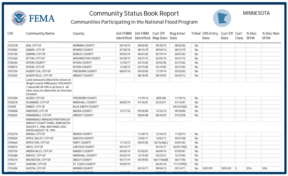
FEMA summarizes communities participating in the National Flood Insurance Program (NFIP) in the Community Status Book. See the CSB for Minnesota.
Participating community are listed alphabetically on pages 1-14, and non-participating communities that have FEMA mapped flood risk are listed on pages 15-16. The CSB also shows current effective FEMA map dates, the first FEMA map dates and date enrolled in the NFIP.
Why is NFIP participation important? Federally backed flood insurance is only available to those in participating NFIP communities; flood insurance is mandatory for most mortgages and secured loans when any part of the buildings covered by that loan is in or touches the FEMA mapped floodplain.
In addition, many FEMA and other grants require the community to be enrolled in the NFIP in order to be eligible for grants and loans, especially for projects involving the FEMA mapped area.
|
How do I learn more about administering my floodplain ordinance?
-
For specific proposal questions: If a project (any size building or any type of grading) is proposed in the FEMA mapped floodplain or within a shoreland district, reach out to your DNR Area Hydrologist. They will loop in floodplain and shoreland program staff, as needed, or contact floodplain management staff directly.
-
Trainings: See the DNR's Floodplain Training and Education page for upcoming floodplain-related trainings, and recordings of one hour virtual trainings given in early 2022 on floodplain and shoreland management, and related land use topics.
-
Minnesota Floodplain Management Quick Guide: A graphics-heavy guide on basic floodplain management topics targeted at local officials.
-
Sign up for Water Talk newsletter: Water Talk is issued at least six times a year and includes educational articles and upcoming DNR and FEMA trainings. See past issues on the Water Talk newsletter page (and subscribe by entering your email at the bottom of the page).
-
Floodplain check-in: Schedule a floodplain check-in meeting with floodplain management staff. If we learn a community with potential floodplain development has new staff, DNR's floodplain management staff often offer a virtual check-in meeting to review the above floodplain information and demonstrate useful online resources. New local staff are also welcome to reach out and request a meeting to cover helpful background.

The ASFPM Foundation Future Leaders Scholarship (FLS) has been established to provide financial support, mentoring and professional opportunities to undergraduate students who will grow to advance the vision of the ASFPM Foundation. The ASFPM Foundation’s vision focuses on reducing the risk and impacts of floods on people and communities.
|
ASFPM Foundation Future Leaders Scholarship key features:
- Up to $20,000 per year for two years available to a student entering their junior year in a 4-year undergraduate degree program in the fall of 2023. The scholarship will pay tuition and living expenses.
- For any degree program that supports the Foundation’s vision of reducing the risk and impacts of floods on people and communities. The FLS is not just for engineers.
Visit the Future Leaders Scholarship page for details. An online application is required. A PDF of the application is available here.
Application deadline is Feb.1, 2023. Email asfpmfoundation@flood.org with any questions regarding the Future Leaders Scholarship.
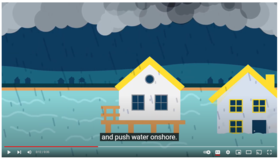
With the recent release of the preliminary new FEMA maps for the St. Louis County, we are seeing the state's first coastal flood zones. This is a good time to check out FEMA's short "What is Coastal Flooding?" video (less than one minute).
Seeing those new coastal zones will likely spur questions from those living near Lake Superior. Future Water Talk issues will discuss key regulatory differences in coastal flood zones.
|

Minnesota Floodplain Management Office Hours
Talk with FEMA and DNR Floodplain program representatives during monthly virtual Minnesota Floodplain Management Office Hours. Hours will be 10-11 am, typically on the fourth Thursday of the month (but a few are adjusted).
Upcoming monthly hours (Note: all are 10 - 11 am central time)
Where: Teams. No registration is required. Select a date to get the Teams meeting appointment.
If there is enough interest, these hours may be expanded.
Ongoing FEMA Flood Insurance Office Hours
Do you have questions about flood insurance? Need help understanding coverages, premiums, underwriting or anything else? FEMA Region 5's Flood Insurance Liaison announces monthly Virtual Flood Insurance office hours. If you have a question about flood insurance, FEMA staff will be available the last Friday of every month to help you out. To protect your privacy, breakout rooms will be available to speak one-on-one with an insurance expert.
Topic: FEMA Region 5 Flood Insurance Office Hours
When: The last Friday of the month, 10 – 11 am central time
Note: Due to low attendance, the flood insurance office hours will not continue in 2023.
Where: Zoom. No registration is required. Office hours are on a first come, first served basis. Drop in here.
|
FEMA Region 5 staff (based in Chicago, IL) are continuing their monthly one hour virtual training series. They are FREE!
It's not too late to register for many training topics!
Upcoming "Managing your Community's Floodplain" monthly series dates and topics:
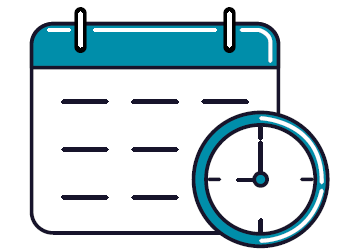
Note: All held 9-10 am Central Time.
-
Nov. 30, 2022: Basement Flooding Mitigation; Registration Link
-
Dec. 14, 2022: Community Rating System (CRS); Registration Link
-
Jan. 25, 2023: No Adverse Impact; Registration Link
|
Important Dates to Note:
(since October 2022 Water Talk and upcoming in next couple months)
|
|
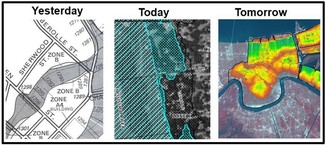 |
Preliminary Maps:
- Oct. 28, 2022: St. Louis County
- Nov. 3, 2022: Morrison County
- Nov. 23, 2022: Pope County (revised panels)
- Dec. 9, 2022: Dodge County
- December 2022: Chippewa County
- January 2023: Wabasha and Wilkin County (panels)
Local Officials Meetings & Open Houses
- Nov. 30, 2022 - Pipestone Countywide
- Dec. 1, 2022 - Rock Countywide
- Jan. 19, 2023 - Morrison Countywide
90-Day Appeal Periods
Letters of Final Determination (LFDs)
Effective (6 months after LFD date)
- Koochiching County - Nov. 17, 2022
- Pennington County - Dec. 1, 2022
Additional Map Update Information:
|
|
 |
|